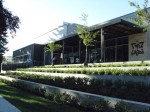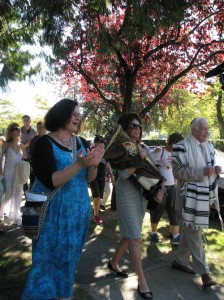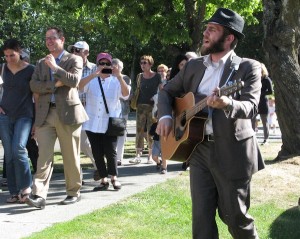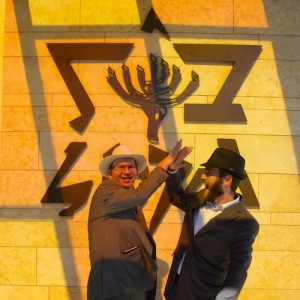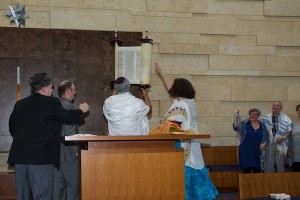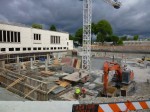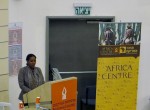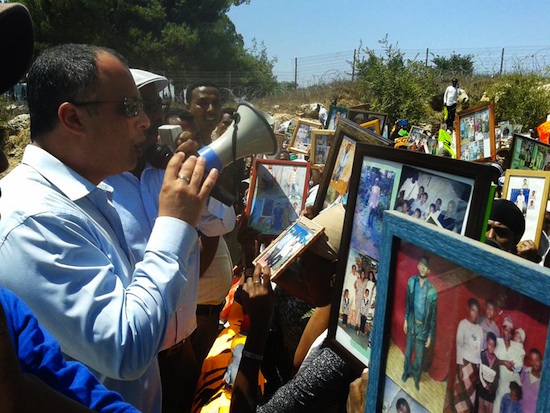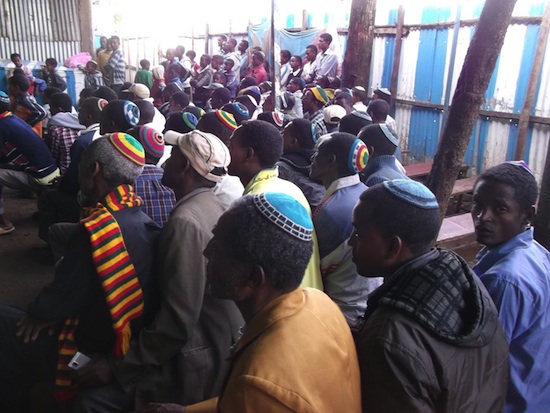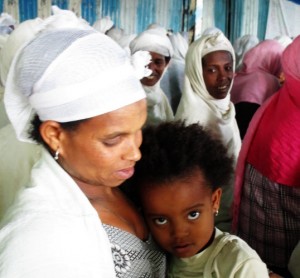Buckminster Fuller in front of the Montreal World’s Fair geodesic dome. (photo from Magnum Photos)
Most of us know Richard Buckminster Fuller as “the dome guy” or, more formally, as the 20th-century genius whose life and vision eventually led to the creation of that most unusual architectural form, the geodesic dome. His early architectural designs, set in the 1970s, would go on to win him worldwide acclaim as an early pioneer in environmental stewardship.
Although it’s no surprise in a city that has always lauded ingenuity, that vision would eventually help remake both Vancouver’s skyline and our concept of enduring, smart, contemporary architecture. But what many 21st-century Vancouverites may not know is that Bucky – as he was equally affectionately called by friends and even strangers – was much more than an architect and a futuristic designer. He was a utopist, a scientist, an idealist, a linguist and probably one of the world’s earliest pioneers in sustainable living.
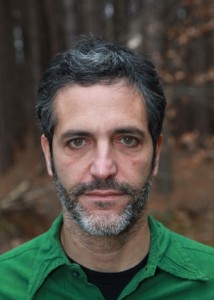
In fact, he was more than that, says filmmaker Sam Green. Green, who received an Academy Award nomination for his documentary on the Weather Underground in 2003, will be presenting his live documentary of Fuller’s life and accomplishments, The Love Song of R. Buckminster Fuller, at the Vogue Theatre on Nov. 12. Green spent several years pouring through the archives of Bucky’s famous Dymaxion Chronofile to compile this synthesis of the futurist’s life, a legacy that is euphemistically reflected in the title of the film.
Fuller, Green said, “spent almost every waking moment trying to make the world a better place,” a vision that was reflective of the immense affection he carried for the world around him. “There was something about him that struck me as very loving about his enormous amount of energy he put into his projects.”
It’s vigor that seems incredibly relevant to today’s sustainability movement, and our increasing focus on climate change. “I was very struck by the fact that he had these conflicting set[s] of messages,” said Green. “His whole life, or the entire 50 years he spent working on this project [what Green sums up simply as his effort to make the world a better place] are more relevant now than they have ever been.” Doing more with less, smart design, harnessing our resources, “and at the core of all of that is this idea that we have all the resources now to make a high standard of living for everybody on the planet.” It was a viewpoint that not only reflected his unbridled idealism, but his intuitive understanding of the precarious balance of life on what he referred to as “spaceship earth.”
“He was a great poet,” said Green. Fuller instinctually understood the power of allusion. “[He] definitely had a fantastic way with words. A lot of his books have just the most wonderful titles.” Poems with names like “God is a Verb,” whose title might have seemed irreverent at the time, captured the drive of a nascent environmental movement. The name of early work An Operating Manual for Spaceship Earth “would have been a cool title in 1975,” said Green. The treatise clearly showed he was ahead of his time when it was first published as a scientific paper in 1967, and it took readers by storm when it was published as a book a year later. His poems, literary works and uncanny insights into human nature have stood just as much the test of time as his many inventions and forays into architectural design.
Green’s live documentary is an exploration into form and allusion in itself. While this isn’t the first time that the filmmaker has combined live narrative with a pre-recorded film to tell a compelling story, the unorthodox format he uses seems to lend itself to the tale of a man who was clearly not afraid to step outside of the bounds of convention. Green’s personal narration, combined with the live accompaniment by American indie rock band Yo La Tengo, seems to resonate with viewers who, like Green, seek the intimate experience of that old pre-digital-age theatre production.
“One of the reasons I like this form is it keeps the experience in the realm of a kind of cinematic context,” Green explained. “You come to the theatre – we’re going to travel all the way from New York – you’ll buy a ticket and come to the theatre. Everybody will turn their phones off [and] we’ll all experience this piece together. It’ll never be the same way twice, and there is something just wonderful and magic about that.”
For Green, who identifies himself as “culturally Jewish,” Fuller’s story resonates with an element that he finds drives much of his cinematic work: “a kind of yearning quality to it,” he said, “a combination of idealism and yearning, and a little bit of heartbreak that I think is very Jewish.”
It’s the same essence he said that drew him to Yo La Tengo’s emotive work. “I very much wanted to work with them because they had the sound that expresses that. Their sound is beautiful. They make beautiful songs with a little bit of yearning and melancholy to them. And that kind of emotional palate to me is very Jewish.”
Green’s earlier cinematic work includes Utopia in Four Movements, which was featured at the San Francisco Jewish Film Festival in 2010; The Weather Underground (2003), which premièred at the Sundance Film Festival and was nominated for an Academy Award; and Rainbow Man/John 3:16 (1997), detailing the tragic story of unusual sports fan Rockin’ Rollen Stewart. His most recent live documentary, The Measure of All Things (2014) about the Guinness Book of World Records, has also been featured at the Sundance Festival.
But, to be sure, The Love Song of R. Buckminster Fuller isn’t just about an American idealist who helped broaden global viewpoints. The Vancouver première, said Green, is also about Vancouver’s intimate relationship with Bucky and the vision he helped create when he visited the city in 1976.
“There are some great Buckminster Fuller connections to Vancouver,” Green acknowledged, noting that Fuller was a frequent visitor to the city that would eventually lay claim to a geodesic dome of its own – today’s Telus World of Science (better known as Science World), one of this city’s most enduring symbols.
The Love Song of R. Buckminster Fuller will be presented by the PuSh International Performing Arts Festival Nov. 12, 8 p.m., at Vogue Theatre. Tickets, $30.50, can be purchased at voguetheatre.com or by calling Northern Tickets at 1-855-551-9747.
Jan Lee’s articles have been published in B’nai B’rith Magazine, thedailyrabbi.com and Voices of Conservative and Masorti Judaism. She also writes on sustainable business practices for TriplePundit.com. Her blog can be found at multiculturaljew.polestarpassages.com.


